Month: November 2017
Give with Purpose on #GivingTuesday and Support the Project
20171128
Show your support of history, culture and social justice this season. Give to the NYC LGBT Historic Sites Project this #GivingTuesday. In a season synonymous with shopping ‘til dropping, #GivingTuesday reminds us that the philanthropic spirit lives on and lives strong!
The NYC LGBT Historic Sites Project has an ambitious research and publication goal for 2018, and we’re counting on your support to achieve it. Your donation will help us research and write over 100 new historic site entries for our website, photograph more buildings, and dive into more archival holdings. Atop the list of our most necessary expenses are professional staff with the expertise to identify and research often-invisible LGBT history and technology experts to maintain our sophisticated website with interactive map — this is critical to ensure we’re achieving one of our foundational goals of serving as a tool for education, especially as Stonewall 50 approaches in 2019.
Donate to help power the NYC LGBT Historic Sites Project into another year.What your support can mean for the Project:
$10: No donation is too small – it all adds up! ![]()
$25: Know that your support helped to continue our work. ![]()
$66: Pay homage to the “Sip-In” which took place at Julius’ Bar in 1966. ![]()
$100: Underwrite the acquisition fees of new archival photographs. ![]()
$250: Sponsor updates to our interactive map and social media posts. ![]()
$500: Support architectural photography for new website entries. ![]()
$1,000: Sponsor a week of archival research and writing. ![]()
$2,500: Be an LGBT-preservation patron; support generously! ![]() Please consider a donation to the NYC LGBT Historic Sites Project. Once you’ve donated, encourage friends, family and colleagues to follow your lead using the social share buttons below.
Please consider a donation to the NYC LGBT Historic Sites Project. Once you’ve donated, encourage friends, family and colleagues to follow your lead using the social share buttons below.
Since launching the project in 2015, we’ve made incredible progress … yet we’ve only scratched the surface of the significant font of LGBT history here in NYC. Support us this #GivingTuesday to ensure that the invisible history of LGBT New Yorkers and Americans is documented, honored and passed on to new generations.
Sincerely,
Ken, Jay, Andrew and Amanda
NYC LGBT Historic Sites Project Team
Talking & Walking LGBT History in Chicago
20171120
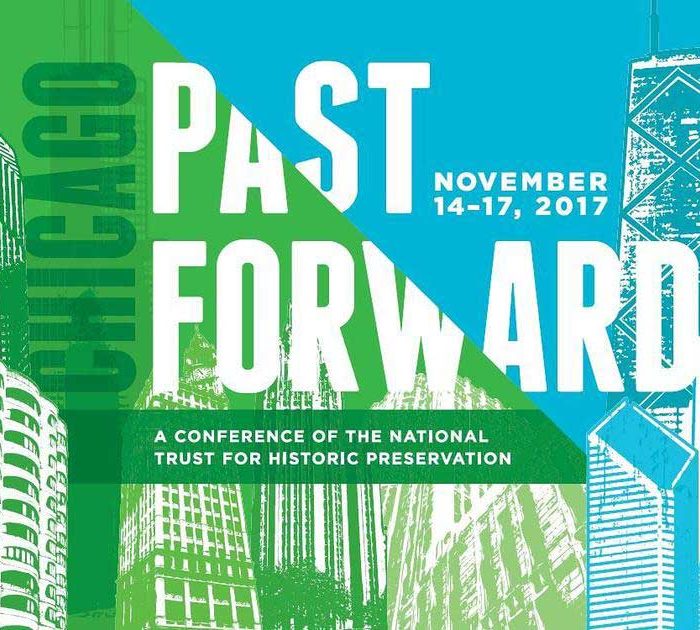
Last week our project manager Amanda Davis was in the great city of Chicago to speak at PastForward, the annual conference of the National Trust for Historic Preservation. Several diversity and inclusion sessions, which concentrated on historic preservation’s role in activism and social justice issues, were held at the historic Palmer House downtown. At the LGBTQ session, Amanda spoke about our Project’s efforts to nominate sites to the National Register of Historic Places, raise awareness of LGBT history through our online interactive map, and work with others in the community to advocate for the protection of these significant spaces. She was thrilled to hear from a number of attendees who are also working on (or hoping to start) similar projects throughout the country.
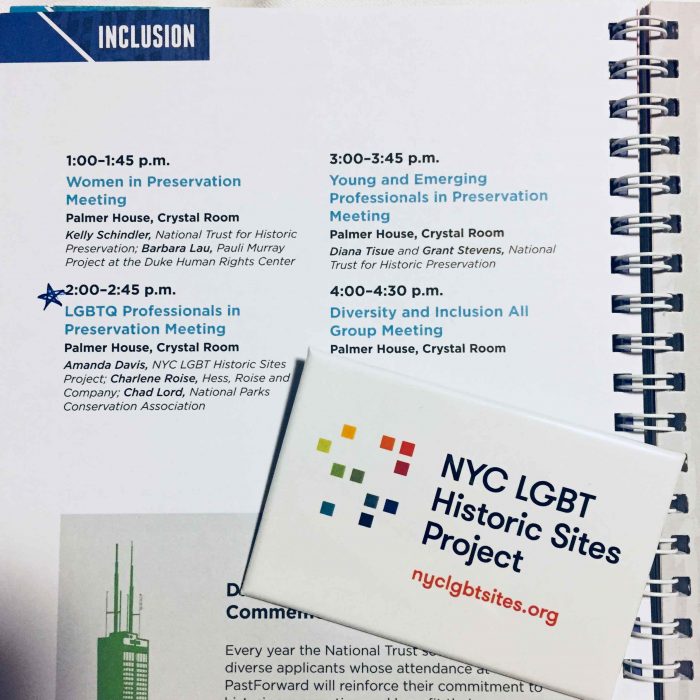
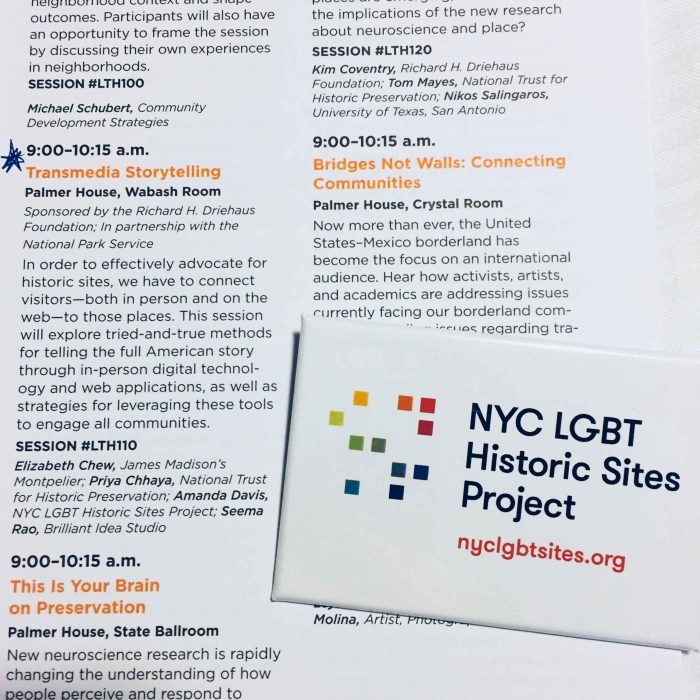
The following day, Amanda spoke at one of the conference’s Learning Labs, a panel discussion on the importance of using technology to engage the public with history. The session was also a wonderful opportunity to showcase how we as storytellers can reach more diverse audiences through different types of media, both online and in person.
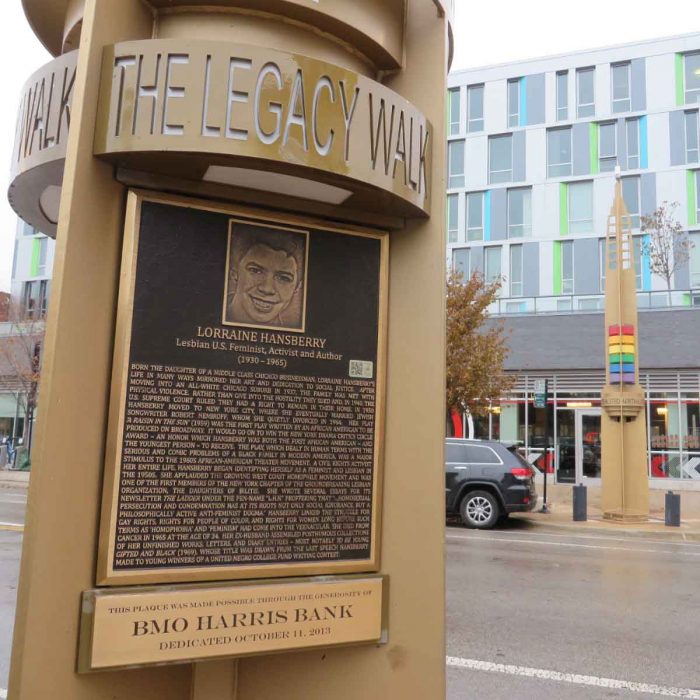
Amanda also had the chance to take the “El” up to Boystown, Chicago’s historically gay neighborhood, to see the Legacy Walk, billed on its website as “the world’s only outdoor museum walk, traveling installation, and youth education program dedicated to combating anti-gay bullying by celebrating LGBT contributions to history.” Located along several blocks of North Halsted Street – between Belmont Avenue and Grace Street – the commemorative project features bronze plaques of notable LGBT figures on “rainbow pylons.” New plaques are added every October 11th (National Coming Out Day). See the end of this post for more photos.
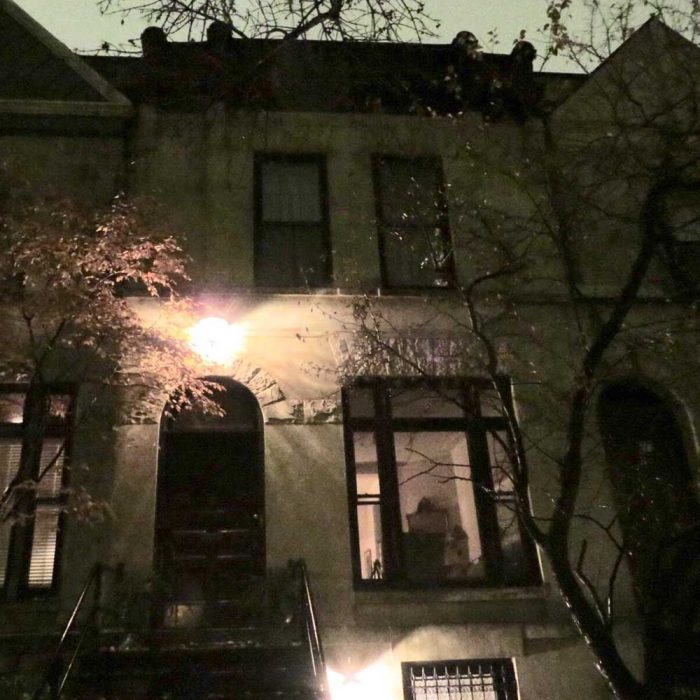
Before leaving Chicago, Amanda also stopped by the former Lincoln Park home of pioneering gay rights activist Henry Gerber. In 2015, the house was listed on the National Register of Historic Places and, in the same year, became only the second National Historic Landmark recognized for its significance to LGBT history (the first being Stonewall in 1999). Before Stonewall, the Mattachine Society, and the Daughters of Bilitis, Gerber founded America’s first LGBT rights organization – the Society for Human Rights – in 1920s Chicago. As a member of the US military he was also stationed (and faced harassment as a gay man) on Governors Island in New York City from the late 1920s to 1945.
Being able to talk about our work in Chicago, learn from others, and see some of the Windy City’s LGBT historic sites in person was a great treat. The Project looks forward to continuing the conversation at next year’s PastForward conference in San Francisco!
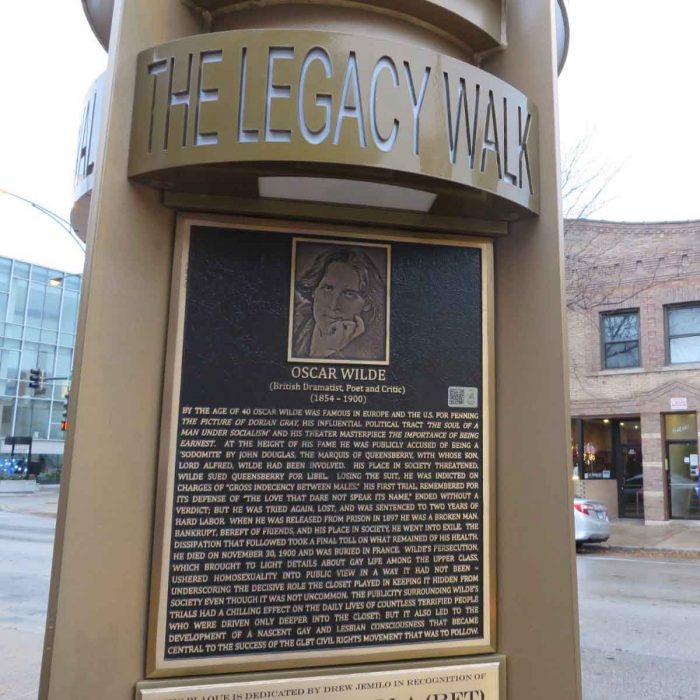
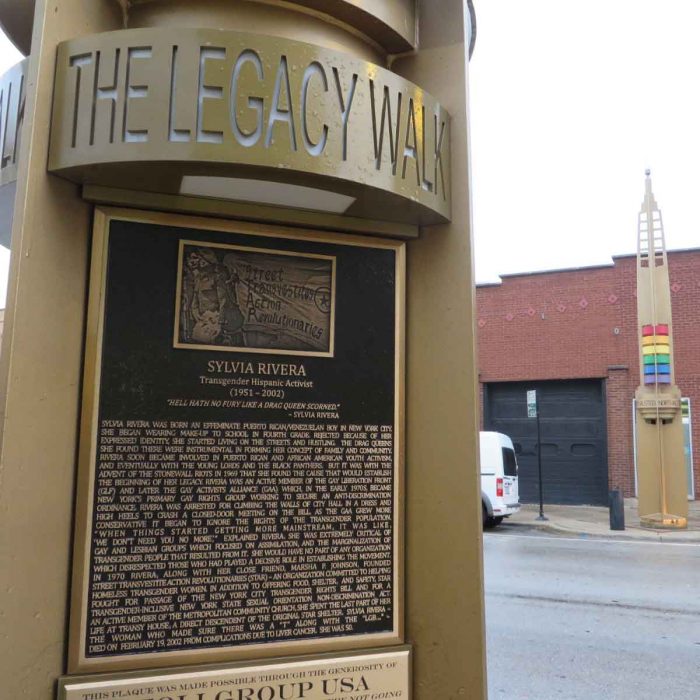
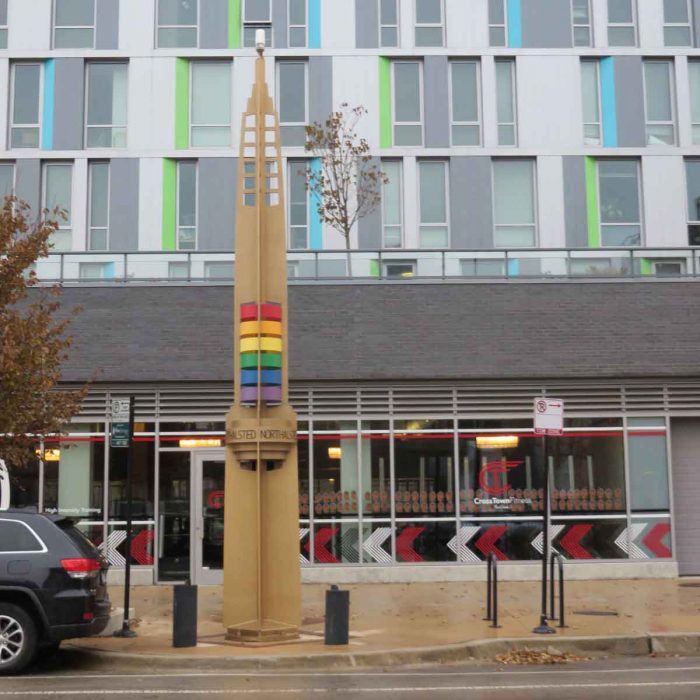
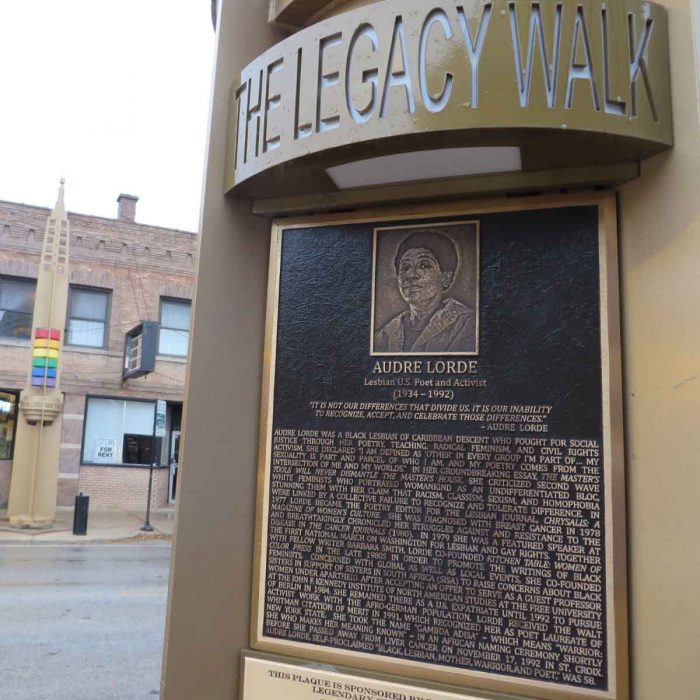
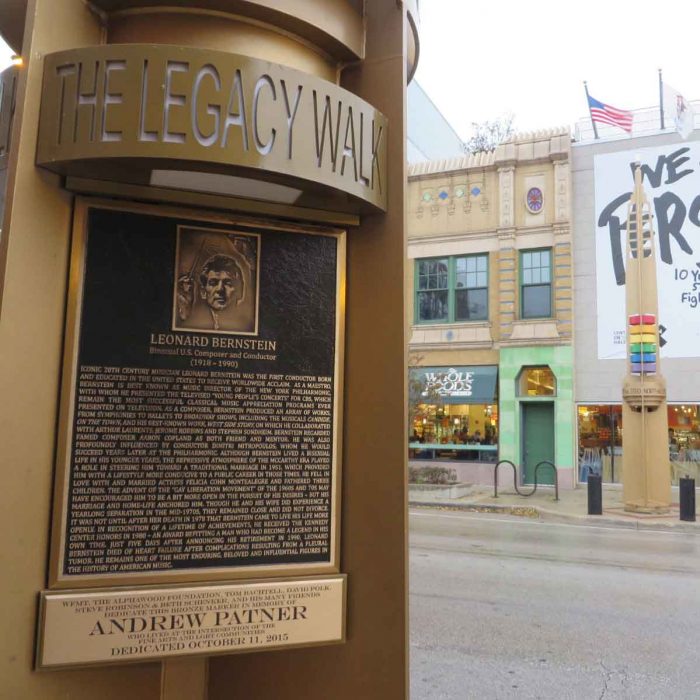
Multimedia
Hosted by Vimeo
Hosted by Soundcloud
Place and Community, a Discussion of Lesbian Nightlife and Culture
20171117 | 6pm
Amos Eno Gallery
56 Bogart Street, Brooklyn, New York
View on Google Maps
Sincere thanks to all who attended last night’s event, a conversation about lesbian nightlife and culture in NYC.
With artist Gwen Shockey‘s current exhibition “Addresses” as our backdrop, we joined with Stacy Lentz of The Stonewall Inn and Flavia Rando of Lesbian Herstory Archives for a discussion which touched upon spatial design, the geography of lesbian bars in NYC, the impact of digital media (dating sites in particular) on the culture of lesbian and queer bars and meeting spaces, and so much more.
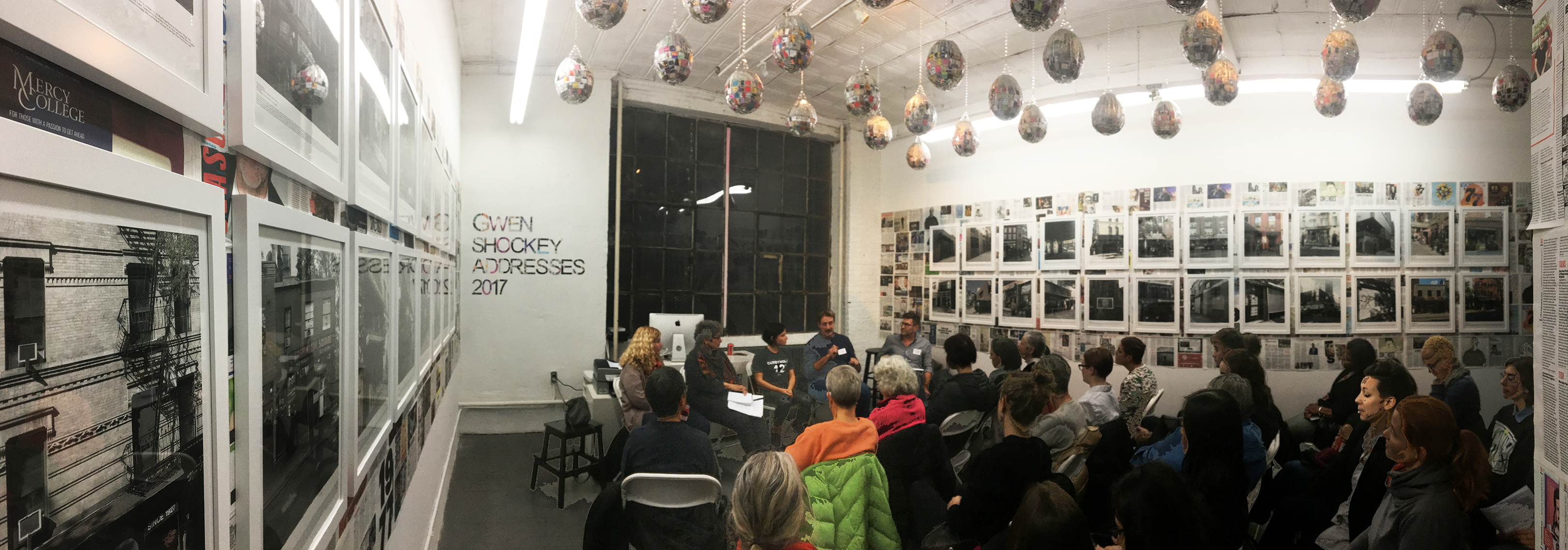
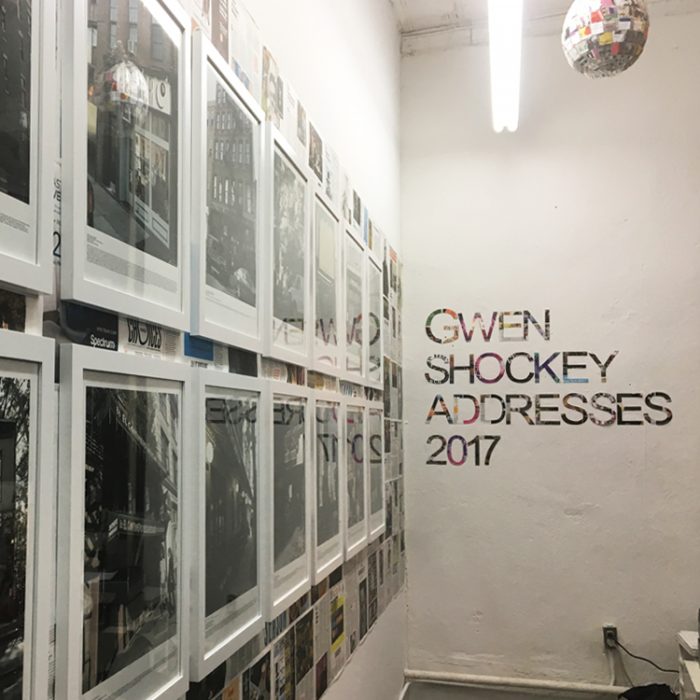
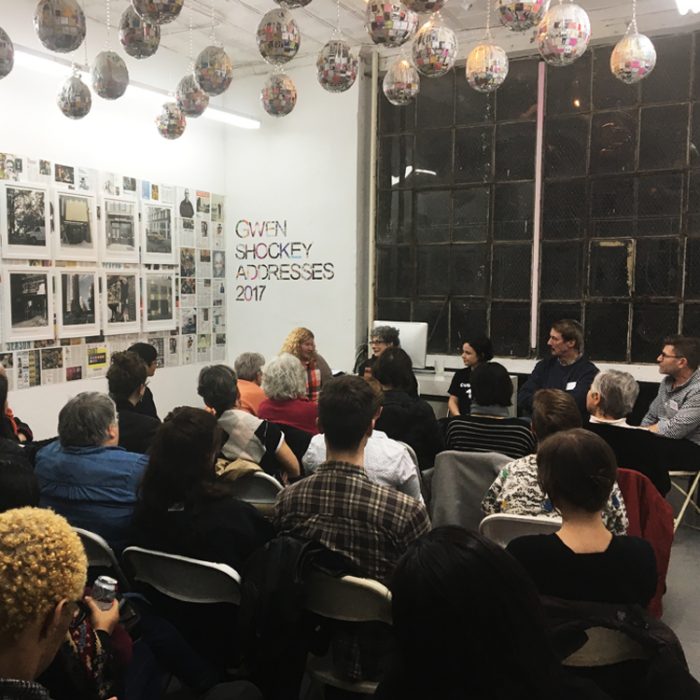
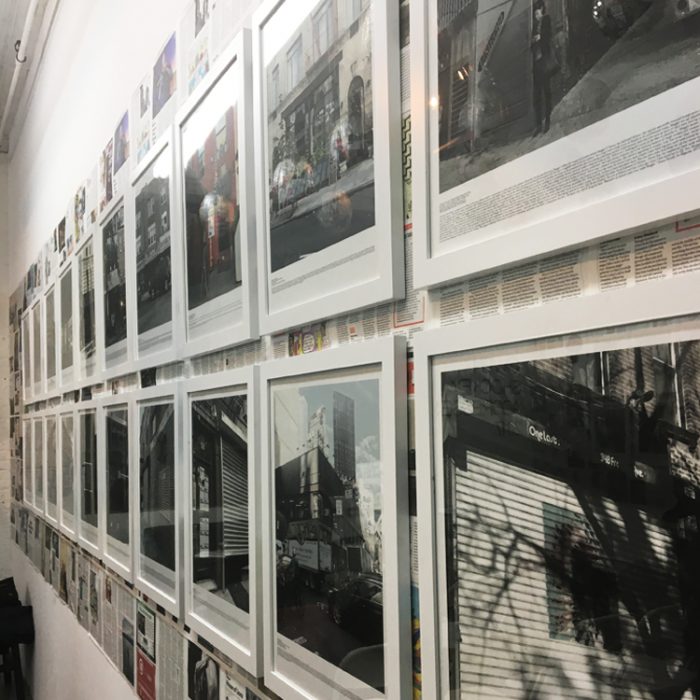
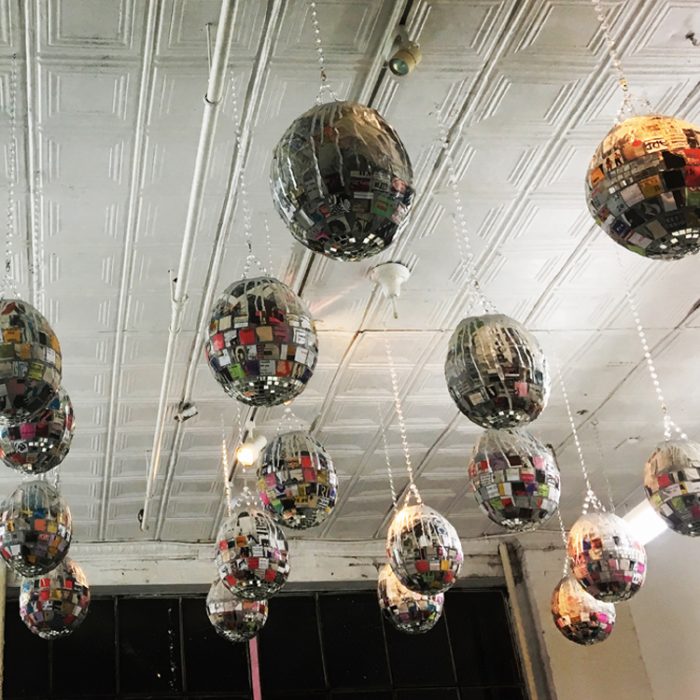
Caffe Cino Listed on National Register of Historic Places
20171116
FOR IMMEDIATE RELEASE
PRESS CONTACT
Ken Lustbader, NYC LGBT Historic Sites Project
p: (917) 848-1776 / e: [email protected]
Caffe Cino Listed on National Register of
Historic Places
Storied theater venue nominated by the NYC LGBT Historic Sites Project for its pioneering role in the development of gay theater and for its importance as a pre-Stonewall meeting space for the LGBT community
New York, NY – This month, the Caffe Cino — long recognized as the birthplace of Off-Off-Broadway theater in New York City — was officially listed on the National Register of Historic Places. The announcement comes nearly 60 years after the theater’s opening in a storefront space at 31 Cornelia Street in Manhattan by Joe Cino, an openly gay man. The venue is significant for its role in the development of gay theater and support of gay playwrights at a time when depicting homosexuality on stage was illegal.
The Caffe Cino was nominated to the State and National Registers of Historic Places by the NYC LGBT Historic Sites Project, a scholarly initiative and educational resource dedicated to broadening people’s knowledge of LGBT history beyond Stonewall and to placing that history in a geographical context. In so doing, the Project is acknowledging sites that are important to LGBT history as well as those that illustrate the community’s influence on America at-large.
“We are delighted to see the Caffe Cino listed on the National Register of Historic Places, following our nomination,” said Amanda Davis, Project manager and lead author of the nomination. “How fitting that today, on what would have been Joe Cino’s 86th birthday, we are able to honor his work and the legacy of the Caffe Cino in this way. LGBT history is American history, and tragically it is too often lost due to a lack of focused efforts of documentation and education. The Project’s work to reverse that trend is immensely important, and the State and National Register listings are validation of LGBT history’s significance to all Americans.”
The office of Governor Andrew Cuomo said in a press release, supporting the nomination of the Caffe Cino to the State and National Registers of Historic Places: “The Empire State proudly celebrates its diverse culture and rich heritage, and with the addition of these significant sites to the Registers of Historic Places, we will continue to honor all of the great things that make New York, New York. Listing these landmarks will honor the contributions made by so many New Yorkers throughout our vast history, and helps advance efforts to preserve and improve these important historic sites for future generations.” Of the Caffe Cino itself, the Governor’s office acknowledged the site as “the first venue of importance to continuously stage Off-Off-Broadway theater and was critical in the development of gay theater and supporting gay playwrights at a time when depicting homosexuality on stage was illegal.”
The listing concludes a long process of archival research as well as oral history interviews, culminating in the Project’s nomination of the Caffe Cino site. Research work was funded, in part, by a grant from the National Park Service Underrepresented Grants Programs, administered through the New York State Office of Parks, Recreation, and Historic Preservation.
Opened in December of 1958, the Caffe Cino was initially intended as a coffeehouse with space for art exhibitions, but the venue soon began allowing patrons to stage poetry readings and short theatrical performances. “The Cino” as it became known was a showcase for original, experimental theater, beginning with the anti-war themed Flyspray in the summer of 1960. It subsequently became New York’s first significant venue to feature work from then-unknown playwrights including Doric Wilson, Robert Heide, Tom Eyen, Sam Shepard, Robert Patrick, Lanford Wilson, H.M. Koutoukas, William M. Hoffman, and many more. Artists who showcased their work there went on to win Pulitzer Prizes, Tony Awards and various other recognitions, and a few became founders of influential theater companies. The most successful production here was George Haimsohn and Robin Miller’s Dames at Sea, which introduced teenager Bernadette Peters in 1966.
The Caffe Cino had a relatively short lifespan. The venue closed in March, 1968 following Joe Cino’s suicide after the death of his partner Jon Torrey. In that short time it evolved from a coffeehouse with art exhibitions into the birthplace of a new theater movement. The cultural scene in New York City was burgeoning and many establishments were beginning to stage plays, but not with any regularity. The Caffe Cino became the first reliable venue to support unknown artists as they honed their craft, allowing them to take risks that would shape the future of American theater.
The Caffe Cino also carries important historical resonance as an incubator of gay theater specifically, and as a support space for gay artists and gay men in general. At a time when depicting homosexuality on stage was a crime, many of the Caffe Cino’s early productions featured gay characters or subject matter. Interest in the arts in New York City’s Greenwich Village was exploding in the early-to-middle 20th Century, but the LGBT community still lacked a physical space in the city in which patrons could gather and see work by and about them. The Caffe Cino was that place, and as such it is a landmark in LGBT culture and history.
Visit the Caffe Cino on the NYC LGBT Historic Sites Project website (click here).
About the NYC LGBT Historic Sites Project
The NYC LGBT Historic Sites Project is a cultural initiative and educational resource that is documenting historic sites connected to the LGBT community throughout New York City. Its interactive map features diverse places from the 17th century to the year 2000 that are important to LGBT history and illustrate the community’s influence on American culture. The Project is nominating sites to the National Register of Historic Places and developing educational tours and programs. For more, visit www.nyclgbtsites.org, or follow on Facebook, Twitter and Instagram.
###
Six New Historic Sites Published
20171031
Capping off October’s LGBT History Month, we’ve added six new sites to our map! This group includes our first Asian-American historic site, another Latino site, and more representation in Queens and Staten Island. There are still lots more diverse sites in our queue that we’re actively researching and photographing so be sure to check back or sign up for our newsletter to stay updated.
The latest additions to our website include:
- Kitty Genovese Residence, Queens: From 1963 to 1964, Kitty Genovese lived here with her girlfriend Mary Ann Zielonko, though they were known to most people as roommates. In March 1964, a sensationalized and largely untrue news article about Genovese’s murder captivated the public and made her a symbol of bystander apathy. (see the full entry)
- “Desi Dhamaka” Protests at Madison Square Park, Manhattan: For several years in the 1990s, the South Asian Lesbian and Gay Association (SALGA) led “Desi Dhamaka” protests in Madison Square Park in response to being banned from participating in the annual India Day Parade. SALGA and its allies also handed out flyers and provided information sessions for the Desi LGBT community in the park. (see the full entry)
- Louis Sullivan & the Bayard-Condict Building, Manhattan: This elegant loft building is the only New York City design of Chicago master architect Louis Sullivan. Evidence suggests the likelihood that Sullivan was a gay man. (see the full entry)
- Jimmy Zappalorti Lane, Staten Island: On January 22, 1990, Vietnam War veteran Jimmy Zappalorti was murdered near his home on the South Shore of Staten Island because he was gay. The highly publicized murder became the borough’s first officially-designated gay hate crime and helped lead to New York State’s first hate crimes bill, which passed in 2000. (see the full entry)
- Empire State Building, Manhattan: After a multi-year campaign led by GLAAD, the Empire State Building commemorated LGBT Pride for the first time in 1990 by lighting its famed tower in lavender, a tradition it continues today with rainbow lighting. In subsequent years it has also been lit in association with World AIDS Day and Spirit Day, an initiative that brings attention to the bullying, and related suicides, of LGBT youth. (see the full entry)
- Asociación de Arte Latinoamericano (ADAL), Manhattan: For nearly 40 years, gay artistic director Max Ferrá led INTAR, a Latino theater company first known as Asociación de Arte Latinoamericano (ADAL) when it was located in this building from 1966 to 1971. Under Ferrá, who was also a co-founder, the company became a major force in developing Hispanic-American theater talent, including original works by several notable LGBT playwrights. (see the full entry)
Caffe Cino Recommended for State and National Registers of Historic Places
20171103
Great news from the Governor’s office! Governor Cuomo announced today that the New York State Board for Historic Preservation has recommended that Caffe Cino, along with 20 other properties, be added to the State and National Registers of Historic Places. From the Governor’s statement:
Governor Andrew M. Cuomo today announced that the New York State Board for Historic Preservation has recommended adding 21 properties, resources and districts to the State and National Registers of Historic Places. The nominations, which reflect the striking diversity of New York’s history, include the Mount Hope Cemetery in the Finger Lakes where both human rights pioneers Frederick Douglass and Susan B. Anthony are buried, four sites significant in African-American history, and an Off-Off-Broadway theater in New York City that is important in LGBT history.
“The Empire State proudly celebrates its diverse culture and rich heritage, and with the addition of these significant sites to the Registers of Historic Places, we will continue to honor all of the great things that make New York, New York,” Governor Cuomo said. “Listing these landmarks will honor the contributions made by so many New Yorkers throughout our vast history, and helps advance efforts to preserve and improve these important historic sites for future generations.”
State and National Registers listing can assist property owners in revitalizing buildings, making them eligible for various public preservation programs and services, such as matching state grants and state and federal historic rehabilitation tax credits. Since the Governor signed legislation to bolster the state’s use of rehabilitation tax credits in 2013, the state and federal program has spurred $3 billion of investment in historic commercial properties.
“State and National Register listing is an important step in appreciating the value of our history,” said Rose Harvey, Commissioner of the Office of Parks, Recreation and Historic Preservation. “Historic preservation is an excellent tool to create jobs, promote tourism, expand housing and encourage private investment, all while preserving natural resources.”
New York City
- Caffe Cino, Manhattan: The 1877 building housed Caffe Cino from December 1958 to March 1968, when it was the first venue of importance to continuously stage Off-Off-Broadway theater and was critical in the development of gay theater and supporting gay playwrights at a time when depicting homosexuality on stage was illegal.
To read the full statement, click here.
SAVE THE DATE: Lesbian Nightlife and Culture, a panel discussion
November 16, 2017 | 6pm
Amos Eno Gallery
56 Bogart Street, Brooklyn, New York
View on Google Maps
Join the Project and artist Gwen Shockey for an evening in celebration of lesbian nightlife and community. Through photography and oral histories, Shockey’s new solo show at Amos Eno Gallery, Addresses, rediscovers sites which have long lived exclusively in the memories of women who founded and flourished in these safe spaces. Panel participants will discuss the history of bars, cafes and clubs dedicated to a lesbian clientele, past and present, and speak more broadly upon the importance of identifying and drawing awareness to this invisible history.
Special guests
Flavia Rando, coordinator for the Lesbian Herstory Archives and founder of the LHA Lesbian Studies Institute
Stacy Lentz, LGBT activist and co-owner of The Stonewall Inn
Thursday, November 16
6:00 pm to 8:00 pm
Amos Eno Gallery, 56 Bogart Street, Brooklyn, NY
Invitation with RSVP to follow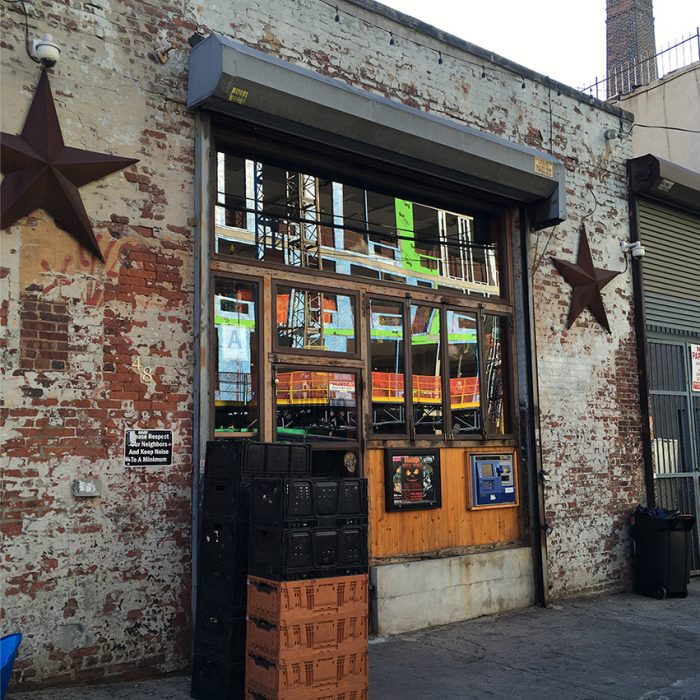 Misster at The Woods, Brooklyn, NY. Photo by Gwen Shockey.
Misster at The Woods, Brooklyn, NY. Photo by Gwen Shockey.